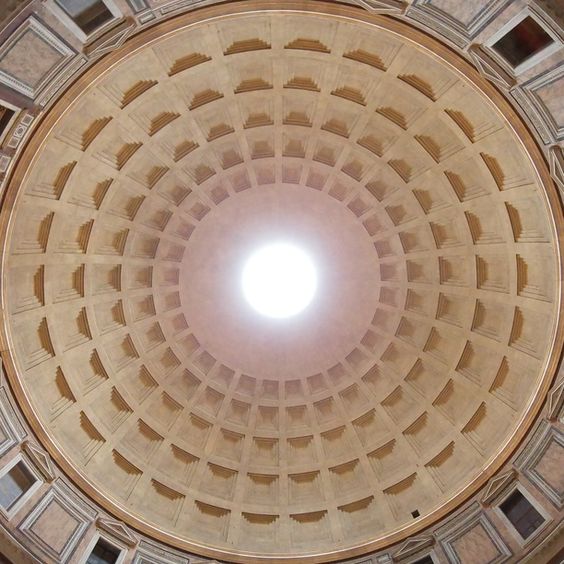
Dieter Cöllen


ETRUSCAN CULTURE
A new cork model represents an Etruscan burial chamber carved in sandstone. While Dieter constructs the model in longitudinal section, Malgorzata concentrates on painting the artistic frescoes. They later form the heart of the model – an emotional insight into a forgotten time and culture.



BIRTHDAY
A few temples have already seen the light of day under the hands of Dieter and Malgorzata. However, they are always unique pieces with their own personality. The work is always a great challenge and leads to new craft experiences. The object ( POSEIDON – TEMPLE IN PAESTUM scale 1:100) still needs some additions, but today it leaves the studio for the first time and is kissed by the sun in Malgorzata’s hands.






HOT SPOT
THE COLOSSEUM was certainly once one of the bloodiest spots in the world – we all know its history. However, its ruin gives us the opportunity to change our perspective and think about different aspects.
Dieter and Malgorzata decided to create a new cork model of this unique monument and integrate all their knowledge into the object, with the desire to offer the audience a wide emotional scope for reflection. Let’s see where the journey goes…




RESPECT AND JOY FOR EVERYONE
Shadow play made in Auschwitz with a cork model of the great pyramid and a children’s toy

A NEW MUSEUM
is open to the public. 14 large cork models by Dieter and Malgorzata Cöllen can be seen in the architecture cabinet of the PASSAU STATE LIBRARY





BACK ON STAGE
After a long time in the darkness of the archives, the cork model of the Capitol Temple can now be seen in Cologne in the Church of ST. MARY IN THE CAPITOL and shows the interesting architectural history of this place.




THE GATES ARE OPEN
The cork model of the Pantheon has arrived at the LINDENAU – MUSEUM and is open to the public in the wonderful ALTENBURG CASTLE…








SALVE ROMA
The cork model of the Pantheon in Rome will be presented to the public in the LINDENAU MUSEUM / ALTEBURG in the exhibition „SALVE ROMA“ from October 8th, 2023 to July 28th, 2024.

BEAUTY UNDER CONSTRUCTION
Corkmodel of the Pantheon in Rome, scale 1:100 by Dieter Cöllen and Malgorzata Lagan

A GREAT HONOR
Today Dieter and Malgorzata had the honor of being guests of PROF. DR. HERBERT BLOMSTEDT in Lucerne. As an admirer and collector of their cork models, they were allowed to take a little journey through his eventful life and benefited from his warmth and immense knowledge. Now it’s summer break, but soon he’ll be touring again and conducting the most famous orchestras. Thank you from our hearts and good luck..

THE PANTHEON – CORK MODELL IN PROGRESS
Perfection demands respect – in it´s contemplation as well as in it´s reflection. The work on the cork model is entering now into it´s most important phase – the modeling of the small details…





Architectural Masterpieces in Cork
The cork models of the three temples at Paestum in front of the engravings of Piranesi at BURDEN – Long Island, New York

Photo: Rainer Mader

Photos: Burden

ARCHITECTURE CABINET
After completing the cork model of the , ARCH OF DRUSUS Dieter and Malgorzata integrated it into the architecture cabinet in the old Jesuit library in Passau – In good company…








ALEXANDRIE : FUTURS ANTÉRIEURS
In the stormy seas, Dieter’s cork model of the Pharos of Alexandria shows us the way to the safe port of Marseilles. At the MUCEM it is part of the extraordinary exhibition ALEXANDRIE : FUTURS ANTÉRIEURS, that opens its gates on February 8th, 2023 – Just drop by…







THANK YOU CAMBRIDGE
At DOWNING COLLEGE Dieter and Malgorzata spent an unforgettable time together with wonderful people from the university and a very interested audience at their seminar – thank you Cambridge!



DIETER AND MALGORZATA IN CAMBRIDGE
Dieter and Malgorzata are invited to talk about their work in Cambridge, Downing College https://www.eventbrite.co.uk/e/the-architect-of-ruins-with-atelier-dieter-collen-tickets-418020068277

FURTHER STEPS
Work on the Pantheon continues. Here Dieter and Malgorzata assemble the columns of the hall…






DOWNING COLLEGE
Watch here the seminars at Downing College and follow DIETER AND MALGORZATA to Cambridge

JUST COME TO CAMBRIDGE
Dieter and Malgorzata are very honoured to have been invited by DOWNING COLLEGE / CAMBRIDGE to report on their work – JUST VISIT

JUST LISTEN
the Syrian storyteller BASSAM DAWOOD and the musician ATHIL HAMDAN in the RAUTENSTRAUCH – JOEST – MUSEUM – SYRIEN – GEGEN DAS VERGESSEN

OPENING SOON
Dieter and Malgorzata have been building large cork models for the architektur cabinet in Passau for several years. With many other objects, they will soon be shown to the public in a wonderful ambience.
The architectural cabinet is part of the Historic Jesuits Library at the State Library of Passau. With the perfectly preserved historic rococo library hall as a starting point the Historic Jesuits Library tries to reconstruct the Jesuits Library in Passau. Jesuitic presence in the city goes back to the year 1612, when the Jesuits founded their institute for higher education in Passau. Also part of the Historic Jesuits Library is a WUNDERKAMMER. Opened in the year 2015 it uses old exhibits still present in the collections of the library as well as permanent loans from important collections of the Bavarian State. The Jesuits had a keen interest in architectural history, which is reflected by a remarkable collection of important literature on the subject. Part of this collection is also presented in the architectural cabinet.

CULTURAL HERITAGE
Dieter as a guest in a scientific stage discussion in the RAUTENSTRAUCH-JOEST-MUSEUM in Cologne about the cultural heritage of Syria and its importance in the future…


THE ART OF RECONSTRUCTION
is the title of a workshop by Dieter and Malgorzata in the RAUTENSTRAUCH – JOEST – MUSEUM in Cologne. Using the example of the Temple of Bel in Palmyra, children will try to recreate the porticus of the temple from the remains of the destruction (here: cork fragments) and make the personal experience that destruction is easier to do than reconstruction. Dieter and Malgorzata give the children complete freedom in their work. Ibrahim and Rosslin from Syria are also there. They had to leave their country from violence, and now they feel like „ambassadors“ between cultures… Many thanks to everyone – we adults also learned a lot!!!









SYRIEN – GEGEN DAS VERGESSEN
The RAUTENSTRAUCH – JOEST – MUSEUM in Cologne is showing a unique exhibition on the great loss of Syrian culture in times of peace. The curator JABBAR ABDULLAH has spared no effort in bringing together artefacts, films and photos that have never been shown before. Dieter’s cork model of the TEMPLE OF BEL can also be seen here. The model was started a few days after its violent destruction in 2015 and completed a year later.





AGAINST DESTRUCTION
As we know, targeted activism is the best medicine for mental paralysis brought on by human stupidity… Inspired by their trip to Rome, Dieter and Malgorzata work diligently on the construction of the Pantheon. As the video shows, the shell of the model is almost complete. Fly with us and maybe enjoy the great architecture of the old masters, which can still bring us closer to the beauty of human creativity even after 2000 years…

ROME -THE BEAUTY
Dieter and Malgorzata visit Rome to study the details of the Pantheon for the construction of the model. Of course they also enjoy spring and are inspired by the charm of this unique city…








THE DOME
The dome of the Pantheon, with an inner diameter of 43.30 m was the largest of its kind for a long time, built with Roman concrete OPUS CAEMENTICIUM Its coffered structure posed a great challenge for Dieter and Malgorzata. First they make a negative mold, which is then filled with 7 layers of cork. The individual segments are then joined together to form the imposing dome.







THE FLOOR
The floor of the Pantheon, which corresponds to the diameter of the dome (43.3m), is inlaid with a pattern of large squares and circles in PORPHYRY, gray GRANITE and Gialla Antico, a coveted yellow marble from SIMITTHU, framed by strips of Pavonanzetto. In order to reproduce this valuable material realistically, the cork base of the model is first coated with chalk primer and later sanded. Then Dieter and Malgorzata apply the intricate pattern in many layers of paint to get the desired effect…




THE PANTHEON IN ROME
For most people, the mere memory of visiting the PANTHEON in Rome arouses great emotional feelings, combined with a longing to return to this magical place. So why not bring the object to the viewer?! Dieter and Malgorzata will face this great challenge. They plan over a year to produce a cork model scale 1:50, which should also show the complete interior with its elaborate equipment. Let’s watch the two of them at work and follow the single steps of this forgotten craft until completion…




BACK TO THE FUTURE
A new designed building by the Berlin studio KAHLFELD ARCHITECTS is the base for the next cork model from Dieter and Malgorzata. The task is to turn the time further into the future and to capture the imaginary decay in maybe 2000 years – an interesting perspective from two points of view …







NEW HOME FOR THE COLOSSEUM

COLOUR
Malgorzata uses natural pigments from the ROUSSILLON in France, which can be found in the landscape there, for the surface of the model. This work takes a lot of time because the paint is applied in several layers in order to achieve the desired result. After that, the pillars must be fixed. A final „make-up“ follows to highlight the contours …




THE TIME OF PHARAOHS
Dieter’s cork model of the Great Pyramid has safely crossed the Atlantic … It will be on view in an exhibition at the Utah-Museum / Salt Lake City from May 20th, 2020 – January 2nd, 2021.
Exhibition title: EGYPT THE TIME OF PHARAOHS
“Let´s hit the dusty trail!”…


PICTURE SHOW
Today Dieter and Malgorzata would like to invite you to a picture show of their cork models – have fun!
CORK MODELS OF ANCIENT MONUMENTS

ARCHITECT OF RUINS
The current book with the cork models by Dieter Cöllen from the JEFF KLOTZ VERLAG in German and English
Why do ruins never cease to provide refreshing shade, despite of their turbulent past?
This question occupied my mind from a young age, when I was a boy searching for lizards in the cracks of ruinous walls. Fortunately, to this very day I did not receive an answer – instead, it inspired my curiosity, humbleness and dreams as well as the wish to erect a monument for these patient witnesses of deterioration.
“Quercus suber” (CORK OAK) made the realisation of these dreams literally “easy”. All the cracks, fractions and damages of stone are already inherent in the cork´s bark and invited me to uncover them.
It is a work against all reasons and custom, only focused on preserving the most authentic picture of ageing; to acquire and transmit a rare monument of undisturbed awe – because in the blink of an eye, it´s like nothing ever happened.

OPENING UP THE SOANE
The Sir John Soane’s Museum in London is one of the most beautiful and interesting museums in the world. Soane collected many cork models during his lifetime, which can still be admired today in a wonderful ambience. Dieter Cöllen had the honor of completing and restoring the famous „model stand“. Together with his friend Hannes Fischer and many other specialists he worked on completing Soane’s dream and living space. Here Dieter invites you to follow him at work in a VIDEO https://www.soane.org/collections/videos/creating-cork-architectural-model